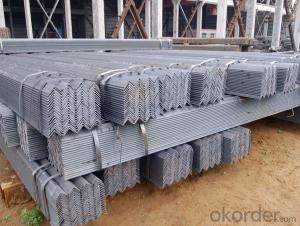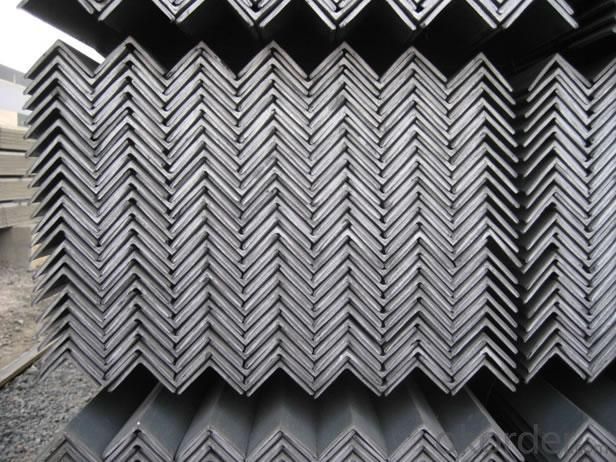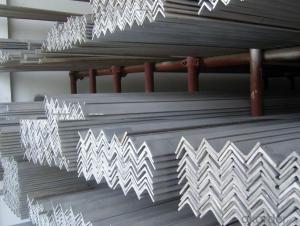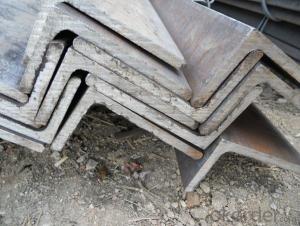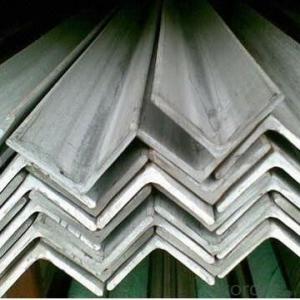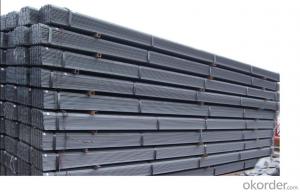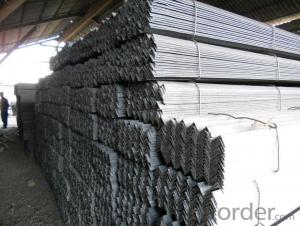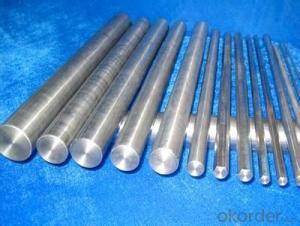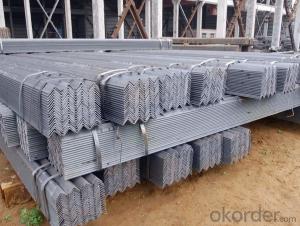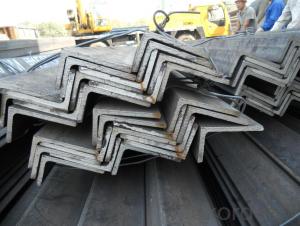Steel Unequal Angle 20-250MM GB Q235 Q345 Or Unequal Angle Steel
- Loading Port:
- Shanghai
- Payment Terms:
- TT OR LC
- Min Order Qty:
- 25 m.t.
- Supply Capability:
- 20000000 m.t./month
OKorder Service Pledge
OKorder Financial Service
You Might Also Like
Specification
Product Description:
OKorder is offeringUnequal Angle 20-250MM GB Q235 Q345 Or Unequal Angle Steel. Our supplier is a world-class manufacturer of steel, with our products utilized the world over. OKorder annually supplies products to European, North American and Asian markets. We provide quotations within 24 hours of receiving an inquiry and guarantee competitive prices.
Product Applications:
According to the needs of different structures, Angle can compose to different force support component, and also can be the connections between components. It is widely used in various building structures and engineering structures such as roof beams, bridges, transmission towers, hoisting machinery and transport machinery, ships, industrial furnaces, reaction tower, container frame and warehouse etc
Product Advantages:
OKorder's Steel Unequal Angle 20-250MM GB Q235 Q345 Or Unequal Angle Steel are durable, strong, and resist corrosion.
Main Product Features:
· Premium quality
· Prompt delivery & seaworthy packing (30 days after receiving deposit)
· Corrosion resistance
· Can be recycled and reused
· Mill test certification
· Professional Service
· Competitive pricing
Product Specifications:
Manufacture: Hot rolled
Grade: Q195 – 235
Certificates: ISO, SGS, BV, CIQ
Length: 6m – 12m, as per customer request
Packaging: Export packing, nude packing, bundled
Sizes: 25mm-250mm | ||||||||||||
a*t | ||||||||||||
25*2.5-4.0 | 70*6.0-9.0 | 130*9.0-15 | ||||||||||
30*2.5-6.6 | 75*6.0-9.0 | 140*10-14 | ||||||||||
36*3.0-5.0 | 80*5.0-10 | 150*10-20 | ||||||||||
38*2.3-6.0 | 90*7.0-10 | 160*10-16 | ||||||||||
40*3.0-5.0 | 100*6.0-12 | 175*12-15 | ||||||||||
45*4.0-6.0 | 110*8.0-10 | 180*12-18 | ||||||||||
50*4.0-6.0 | 120*6.0-15 | 200*14-25 | ||||||||||
60*4.0-8.0 | 125*8.0-14 | 250*25 | ||||||||||
FAQ:
Q1: Why buy Materials & Equipment from OKorder.com?
A1: All products offered byOKorder.com are carefully selected from China's most reliable manufacturing enterprises. Through its ISO certifications, OKorder.com adheres to the highest standards and a commitment to supply chain safety and customer satisfaction.
Q2: How do we guarantee the quality of our products?
A2: We have established an advanced quality management system which conducts strict quality tests at every step, from raw materials to the final product. At the same time, we provide extensive follow-up service assurances as required.
Q3: How soon can we receive the product after purchase?
A3: Within three days of placing an order, we will begin production. The specific shipping date is dependent upon international and government factors, but is typically 7 to 10 workdays.
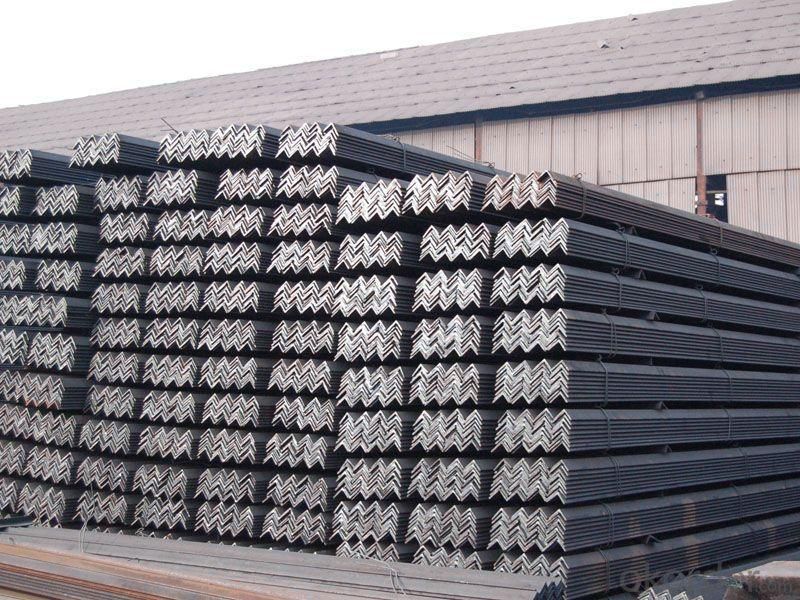
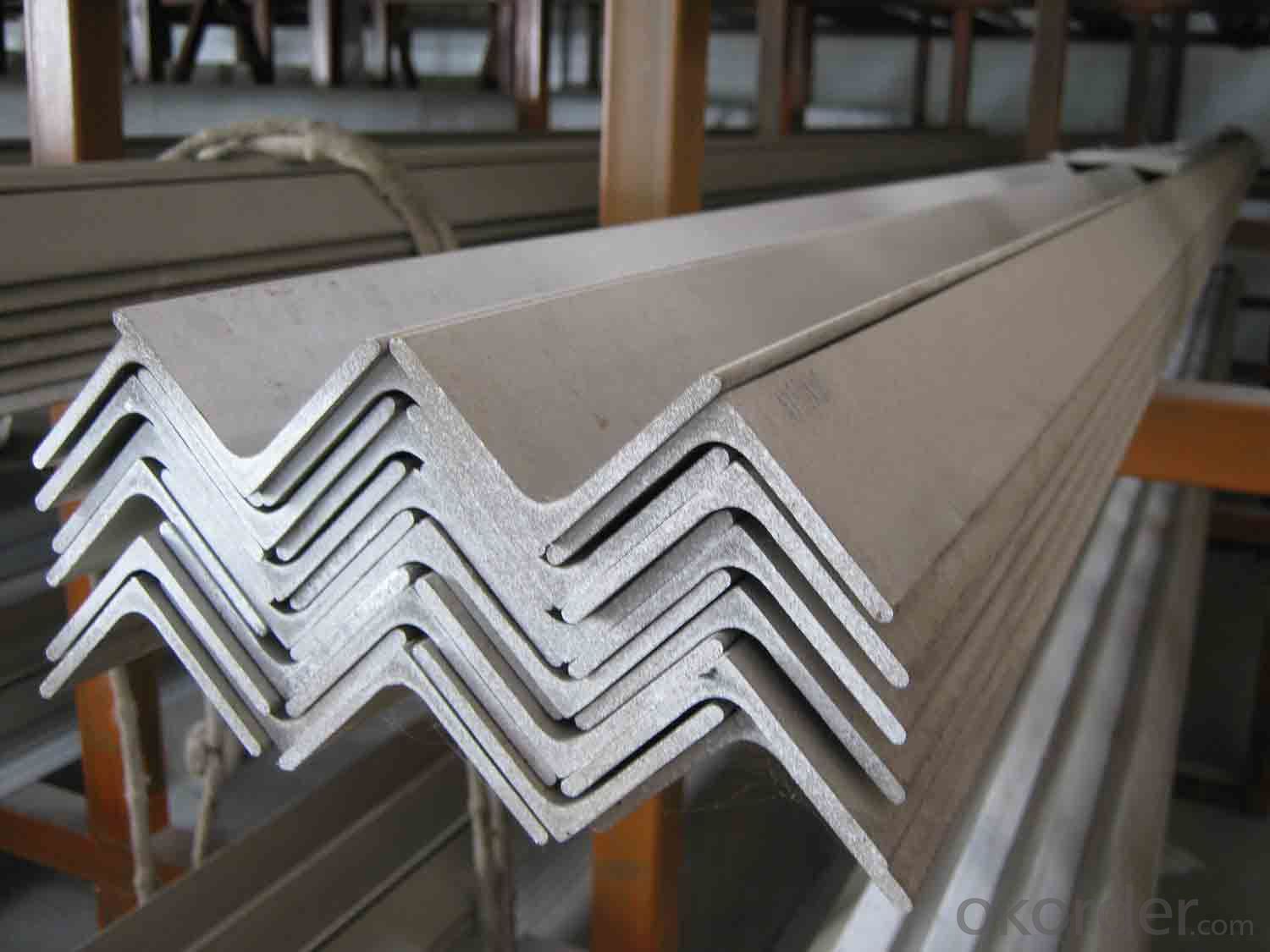
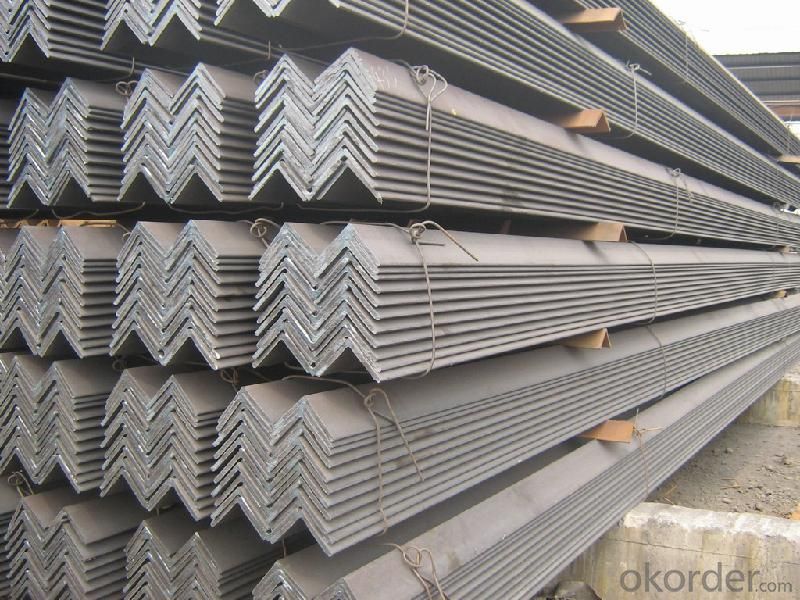
- Q: Can steel angles be used in staircases?
- Steel angles are indeed suitable for use in staircases. Due to their strength and versatility, they are commonly employed as structural components in construction. In staircases, steel angles serve to offer support and stability to both the steps and handrails. They are frequently utilized as stringers, inclined structural members that uphold the treads and risers of the staircase. Moreover, steel angles can be utilized to reinforce the connections between the treads and risers, thereby ensuring the staircase's structural integrity. Furthermore, steel angles can function as handrails or balusters, providing a secure and long-lasting railing system. All in all, steel angles present a dependable and cost-effective solution for constructing staircases that can withstand heavy loads and meet the necessary safety standards.
- Q: Can steel angles be used in the construction of sports stadiums?
- Yes, steel angles can be used in the construction of sports stadiums. Steel angles are versatile structural elements that can be used to support heavy loads and provide stability in large structures like sports stadiums. They are commonly used in the construction industry for various applications, including framing, support columns, and bracing systems. Steel angles offer excellent strength and durability, making them suitable for withstanding the dynamic forces and heavy loads experienced in sports stadiums. Additionally, steel angles can be easily fabricated and customized to fit the specific design and structural requirements of the stadium, offering flexibility in construction. Overall, steel angles are an ideal choice for the construction of sports stadiums due to their strength, versatility, and ability to withstand the unique demands of such large-scale structures.
- Q: What are the tolerance specifications for steel angles?
- The tolerance specifications for steel angles can differ based on various organizations and industries' specific standards and requirements. However, in general, the tolerance specifications for steel angles typically encompass measurements for dimensions like leg length, thickness, and straightness. Leg length tolerance ensures that the angle's legs are within an acceptable range of the desired measurement by allowing a certain deviation from the specified leg length. For instance, a tolerance specification of ±1/8 inch permits the leg length to deviate by up to 1/8 inch in either direction from the specified dimension. Thickness tolerance denotes the allowable deviation in the thickness of the steel angle. This specification guarantees consistency and adherence to an acceptable range of thickness. It is usually expressed as a percentage or an absolute value. For example, a tolerance specification of ±10% permits the thickness to deviate by up to 10% above or below the specified dimension. Straightness tolerance ensures that the steel angle is not bent or twisted and meets the required straightness criteria. It is commonly measured by the maximum allowable deviation from a straight line. This tolerance specification guarantees ease of fitting and alignment during construction or manufacturing processes. It is important to note that the specific tolerance specifications for steel angles may vary depending on the intended application, industry standards, and regulatory requirements. Therefore, it is recommended to consult the manufacturer, industry associations, or governing bodies for accurate and up-to-date information on the tolerance specifications for steel angles by referring to the relevant standards, codes, or specifications.
- Q: How do you clean steel angles?
- To clean steel angles, you can start by removing any loose dirt or debris with a soft brush or cloth. Then, mix a solution of mild detergent and warm water and use a sponge or cloth to gently scrub the surface. Rinse the angles thoroughly with clean water and dry them with a clean cloth to prevent any water spots or rusting.
- Q: Can steel angles be used for stairs?
- Stairs can indeed utilize steel angles. The construction industry frequently employs steel angles for a multitude of purposes, including the creation of staircases. These angles are frequently employed to provide the necessary structural support for stair treads and risers. By incorporating steel angles, stairs gain durability and stability, rendering them a favored option for both residential and commercial structures. Moreover, steel angles boast adaptability for stair construction as they can be effortlessly tailored and fabricated to meet unique design specifications.
- Q: How do you reinforce a steel angle for added strength?
- There are various ways to reinforce a steel angle for added strength. One effective technique involves welding additional steel plates or gussets to the flanges of the angle. These plates or gussets are typically placed perpendicular to the angle and welded along their edges to create a stronger connection. This helps distribute the load and improve the structural integrity of the angle. Another approach is to create a sandwich-like structure by bolting or riveting additional steel plates or angles to the existing one. These additional elements can be positioned on either side or even on top of the existing angle, depending on the specific requirements. Bolting or riveting them together ensures a secure connection and enhances the overall strength of the angle. Furthermore, bracing techniques can also be employed to reinforce a steel angle. This involves adding diagonal steel members, commonly known as braces, to the angle. The braces are typically attached to the angle at multiple points using welding or bolting methods. By doing so, these braces help redistribute the forces acting on the angle and prevent excessive deflection or bending, thereby increasing its strength. It's important to consider factors such as the load or force the angle will experience, the desired level of strength, and the available resources when choosing a specific reinforcement method. Seeking guidance from a structural engineer or a professional in the field is highly recommended to ensure the appropriate reinforcement technique is chosen and implemented correctly.
- Q: How are steel angles supported during installation?
- Various techniques and materials are typically utilized to support steel angles during installation. One popular approach involves employing steel brackets or supports specially designed to secure the angles in place. These brackets are commonly affixed to the structure using bolts or screws, effectively providing stability and structural integrity to the angles. Another means of support involves directly welding the steel angles to the structure. This entails employing a welding process to fuse the angles to the existing steel framework, guaranteeing a robust and secure connection. Welding is often the preferred method in situations where the angles bear heavy loads or require additional strength. Concrete or masonry may also be employed to support steel angles in certain cases. This method involves embedding the angles into the concrete or masonry structure, creating a solid and stable foundation for the installation. Construction projects often utilize this technique when secure fixation to the building or additional reinforcement is necessary. Ultimately, the specific method of supporting steel angles during installation depends on the project's requirements, the necessary load-bearing capacity, and the design specifications. It is crucial to adhere to the appropriate industry standards and guidelines to ensure a safe and successful installation.
- Q: Can steel angles be used for outdoor applications?
- Yes, steel angles can be used for outdoor applications. Steel angles are typically made from weather-resistant materials such as stainless steel or galvanized steel, which makes them suitable for outdoor use. Their durability, strength, and resistance to corrosion make them a popular choice for various outdoor applications such as construction, fencing, and support structures.
- Q: How do you determine the load capacity of a steel angle?
- The load capacity of a steel angle is determined by calculating its moment of inertia and considering factors such as material strength, dimensions, and the type of loading it will be subjected to. Additionally, engineering standards and codes provide guidelines for determining load capacities based on these calculations.
- Q: What are the different methods of impact testing for steel angles?
- There are several methods of impact testing that can be used to assess the toughness and resistance of steel angles. These methods include the Charpy V-notch test, the Izod test, and the drop weight test. 1. Charpy V-notch Test: This is one of the most commonly used methods for impact testing. In this test, a notched specimen of the steel angle is placed in a pendulum hammer. The hammer is released, swinging down and striking the specimen. The amount of energy absorbed by the specimen before it fractures is measured and used to determine the impact toughness of the material. 2. Izod Test: Similar to the Charpy V-notch test, the Izod test involves using a pendulum hammer to strike a notched specimen of the steel angle. However, in this test, the specimen is clamped vertically, while the hammer strikes it horizontally. The energy absorbed by the specimen is measured and used to evaluate its impact resistance. 3. Drop Weight Test: This method involves dropping a weight onto a specimen of the steel angle from a certain height. The specimen is usually supported on a solid base, and the impact energy is calculated based on the weight and the height of the drop. The deformation and fracture behavior of the specimen are then analyzed to determine its impact toughness. These different methods of impact testing help engineers and manufacturers assess the ability of steel angles to withstand sudden impact or shock loads. By evaluating the toughness and resistance of the material, these tests provide valuable information for designing structures and selecting appropriate materials for various applications.
Send your message to us
Steel Unequal Angle 20-250MM GB Q235 Q345 Or Unequal Angle Steel
- Loading Port:
- Shanghai
- Payment Terms:
- TT OR LC
- Min Order Qty:
- 25 m.t.
- Supply Capability:
- 20000000 m.t./month
OKorder Service Pledge
OKorder Financial Service
Similar products
Hot products
Hot Searches
